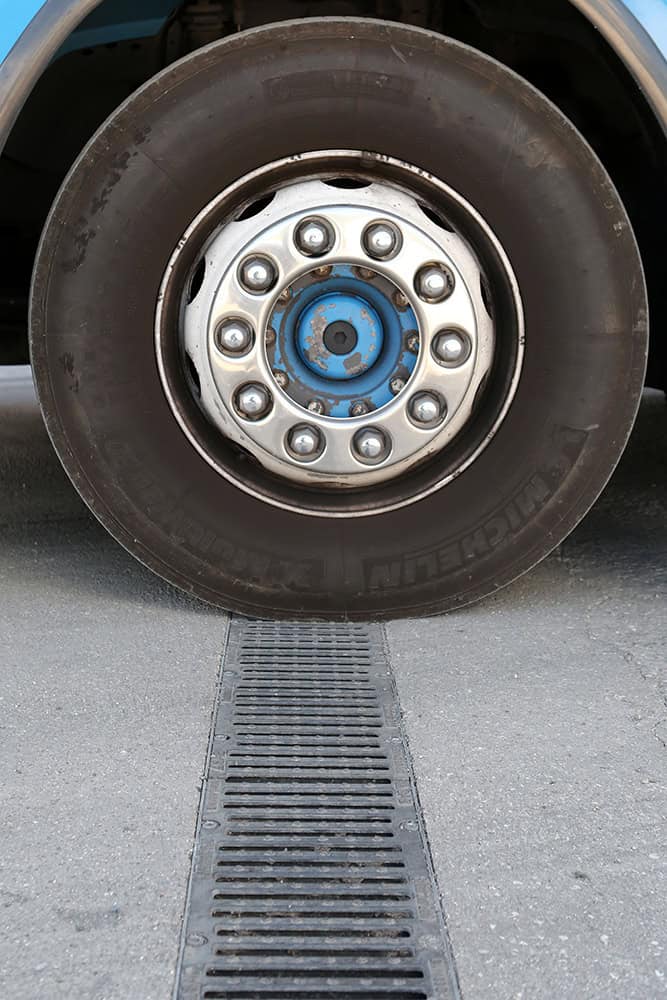Drainage systems are an essential component of any construction project, whether it’s a residential building, commercial complex, or even road infrastructure. When it comes to designing an efficient and reliable drainage system, selecting the right materials is crucial. One material that has gained popularity in recent years is polypropylene. In this blog post, we will explore the advantages of using a polypropylene drainage channel, and how it can contribute to the effectiveness and longevity of your drainage system.
Superior Durability & Strength
Polypropylene drainage channels are known for their exceptional durability and strength. The material is highly resistant to corrosion, chemical attacks, and weathering. This means that it can withstand harsh environmental conditions, heavy loads, and extreme temperatures without deteriorating or compromising its structural integrity. Unlike traditional drainage materials such as concrete or metal, polypropylene channels are less prone to cracking, rusting, or weakening over time, resulting in a longer lifespan for your drainage system. The advanced construction of SABdrain drainage channels gives it greater structural rigidity, protecting it from damage during and after installation.

Lightweight & Easy Installation
Polypropylene drainage channels are significantly lighter than alternative materials. This lightweight characteristic makes them easy to handle and install, reducing the time and effort required for the installation process. The ease of installation also contributes to cost savings, as it minimises labour requirements and potential disruptions to the construction schedule. Additionally, the lightweight nature of polypropylene channels simplifies transportation logistics and makes them a more sustainable choice.
Plastic channels can be easily installed on site due to the characteristics of polypropylene that make installation lightweight, easy to transport and handle. Concrete channels are much heavier than polypropylene ones and are therefore more likely to have a significant impact on labour and transport costs.
For example, based on the same performances, a drainage channel made of polypropylene, class D400 with an internal section of 200x200mm has a weight of approximately 22kg, while a concrete channel can weigh up to 130kg. This also leads to the use of equipment for the transportation and laying of concrete channels, which contributes to the increase in costs.
Polypropylene channels can be installed directly by the workforce; and with ease.
"The SABdrain was very convenient to use on the Northern Road Stage 5. The product was easily handled and very quick to install. We used 60% of the allocated time to install the SABdrain than we anticipated.I would recommend the product for use in the future on all our projects."
- Hassan Ghonaim
Senior Project Engineer, CPB Contractors
Excellent Chemical Resistance
Polypropylene drainage channels exhibit excellent resistance to a wide range of chemicals, making them suitable for various applications. Whether your drainage system is exposed to acidic or alkaline substances, industrial chemicals, or saltwater, polypropylene can withstand the corrosive effects and maintain its integrity over time. This chemical resistance ensures that your drainage system remains functional and efficient, even in challenging environments such as manufacturing plants, laboratories, or coastal areas.
View Chemical Resistance TableAs our parent company SAB have pointed out in their article on rainwater drainage channels in service stations and forecourts, chemical resistance is an important element to evaluate when considering which type of drainage channel to choose. Extending the useful life of the drainage system decreases the chances of an emergency intervention to replace or repair drainage channels that have been installed previously.
An example of this type of intervention was the installation of Sabdrain channels in petrol stations in Jordan for three major fuel distribution players: JoPetrol, Total and Al Manaseer. The project involved about 2,000 metres of drainage system and the proximity of Gersa’s stations next to Hadrian’s Arch, a historical and artistic beauty dated back to 130 AD, made the success of the project even more relevant and significant.
Initially, petrol stations used concrete channels in order to optimise material costs. However, this solution soon led to a serious problem with the rapid deterioration of the channels.
Low Maintenance
One of the significant advantages of using polypropylene drainage channels is their low maintenance requirements. The smooth interior surface of the channels creates higher flow rates to create a self cleaning action, preventing the accumulation of debris, sediments, or other materials, reducing the risk of clogging and blockages. This not only improves the efficiency of the drainage system but also minimises the need for frequent cleaning and maintenance. With polypropylene channels, you can enjoy a hassle-free drainage system that requires minimal attention and upkeep.
Polypropylene drainage channels offer numerous advantages that make them an excellent choice for any drainage system. Their superior durability, lightweight nature, chemical resistance, low maintenance, and versatility make them a reliable and cost-effective solution. By opting for polypropylene channels, you can ensure the long-term functionality, efficiency, and durability of your drainage system. So, if you’re planning a construction project or looking to upgrade your drainage system, consider the advantages of polypropylene drainage channels and make an informed decision for a successful and sustainable solution.
Polypropylene drainage channels offer numerous advantages that make them an excellent choice for any drainage system. Their superior durability, lightweight nature, chemical resistance, low maintenance, and versatility make them a reliable and cost-effective solution. By opting for polypropylene channels, you can ensure the long-term functionality, efficiency, and durability of your drainage system. So, if you’re planning a construction project or looking to upgrade your drainage system, consider the advantages of polypropylene drainage channels and make an informed decision for a successful and sustainable solution.